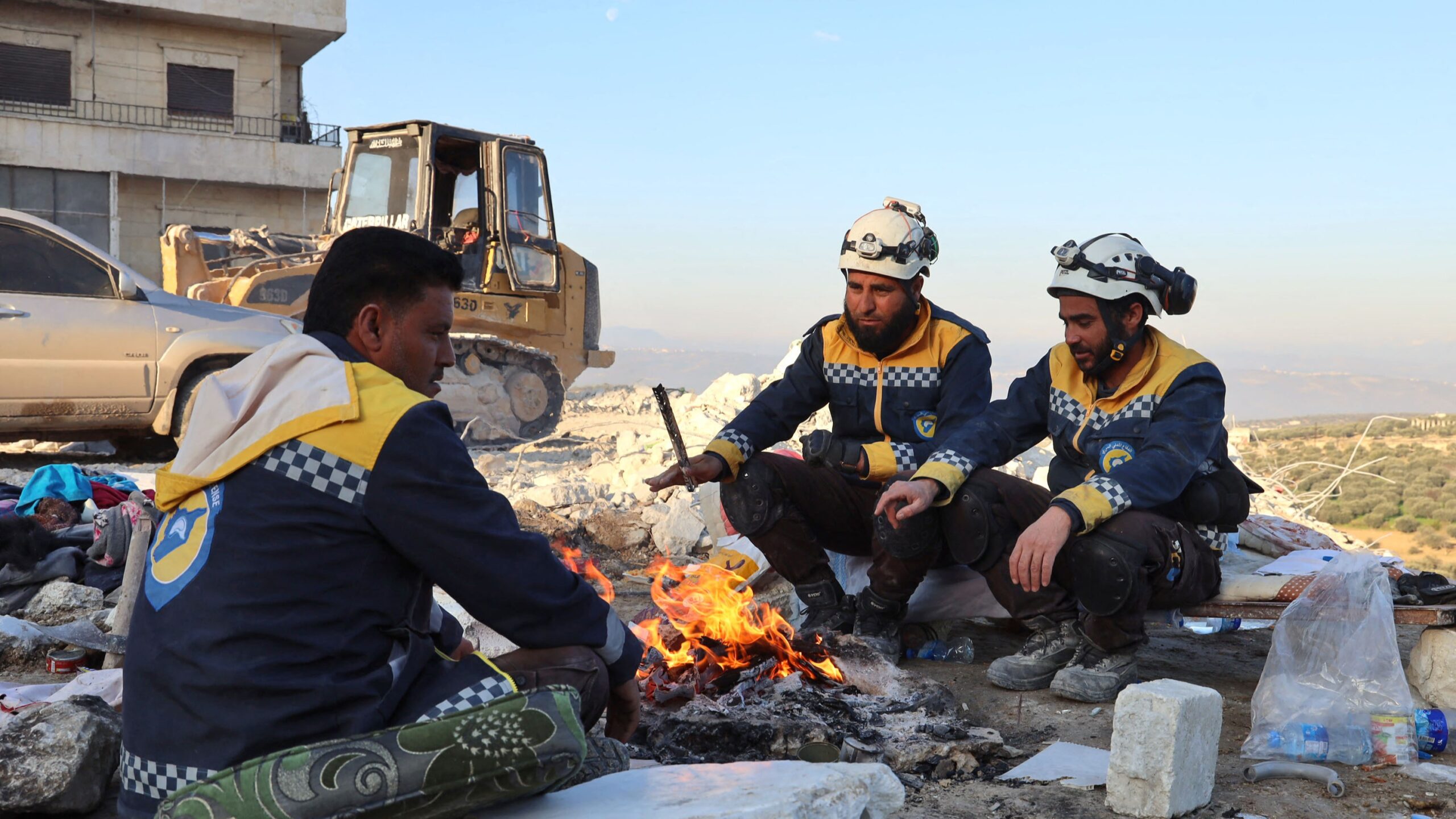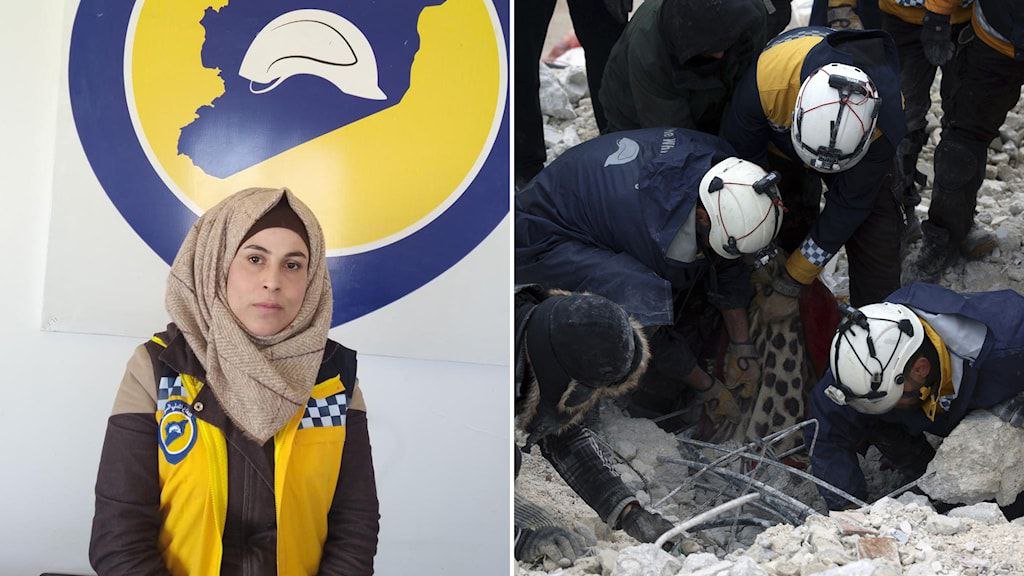An Interview with White Helmets’ Board Member Nada Al-Rashed

Coinciding with the one-year anniversary of the horrific earthquakes that devastated southern Turkey and northern Syria in February of 2023, Levant 24 contacted the White Helmets and interviewed Nada Al-Rashed, originally from Al-Rastan, Homs where she took part in the demonstrations demanding dignity and freedom for Syrians, before being forced to leave her university due crackdowns and concerns of arrest. She lost three of her brothers to the war, who were killed in airstrikes.
Al-Rashed has worked with the Qatar Red Crescent Society (QRCS) before joining the Syrian Civil Defense (White Helmets) where she was elected to the board in 2019, which she currently serves on. Nada plays an integral role in leading the organization and directing humanitarian efforts for the 3,000-strong volunteer-based organization.
_______________________________
L24: What was the impact of the 2023 Turkey-Syria earthquakes on the different sectors, such as the refugee crisis, housing, medical and education infrastructure, and the economy?
Nada Al-Rashed: “First of all, let’s acknowledge an important point. In natural disasters, any country facing a crisis needs to have the capability as a state to respond to such a disaster. If it lacks the capability, other countries usually step in to assist in the response. There is collaboration, mutual assistance, and clear involvement of the international community. Ultimately, countries should have the infrastructure, the ability to control and direct responses properly, and the capacity to deal with various sectors effectively.
“However, in our case in northwest Syria, the situation is entirely different. We have been living through earthquakes for over 13 years, experiencing similar but not equally powerful tremors almost every day. These earthquakes reflect the same destruction and devastation of livelihoods, economy, and education. When the earthquake hit Syria, its effects were multiplied compared to other regions. The population density, the areas it struck, and the potential impact on major urban centers could have been more significant.
“Two critical issues exacerbated the earthquake’s consequences. Firstly, the lack of infrastructure and its significant impact on buildings and side effects. Secondly, the absence of building regulations, both during the regime days and the periods leading up to the earthquake, meant there were no building standards to create earthquake-resistant structures or avoid constructing in vulnerable areas. This lack of regulation posed a significant danger. We witnessed the clear effects, especially in Saraqib and Jindires.

“Let’s talk about the refugee crisis, akin to the earthquake being a death upon death. Not only in the literal sense but metaphorically as well, as over 40,000 families were displaced overnight. This created a significant crisis. People were already suffering. We, with two million internally displaced people in northwest Syria, were forced into more displacement by the earthquake. Ironically, camps, at this moment, became a safe haven for people because there was no destruction – no buildings to fear collapsing or walls that were merely tents.”
L24: How would you evaluate the rapid response to the disaster by the Syria Civil Defense?
Nada Al-Rashed: “The situation was catastrophic. No one had the immediate capacity to respond by establishing camps. Within three days, we started mobilizing teams to set up camps in collaboration with local authorities and other organizations. There was a significant challenge in choosing suitable locations for the camps quickly. The goal was to provide emergency response and try to accommodate those affected. Collective shelters and community housing centers were set up hastily, but the situation was disastrous due to the lack of infrastructure.
“The impact on medical facilities was relatively limited, with damages reported at several medical centers, including structural damage and equipment loss. We are currently planning rehabilitation projects. Schools were also affected, with 49 schools needing repairs. The educational impact was significant, as schools, especially those previously targeted by bombings, suffered great damage. The overall effect of the earthquake was a massive disruption to livelihoods and the education process due to the damage caused. The people lost many sources of income, and markets completely closed, aggravating the already dire economic situation.

L24: What were the successes of the mobilization and in what way did the White Helmets grow and learn from this experience?
Nada Al-Rashed: “How would we evaluate the quick disaster response to the earthquake? In our important work, we, as a Syrian Civil Defense team, are highly trained. Our training is extensive, and I can’t emphasize enough the accumulated experience we gained, especially in responding to disasters. As I mentioned earlier, the earthquake was similar to what we usually face, but certainly much larger. When responding, there were times we dealt with twenty sites in a single day, each with a collapsed building. Currently, it is similar but on a larger scale. Volunteers have immense experience in high-level professional response, especially in dealing with building collapses.
“Thankfully, we haven’t experienced any incidents of collapse due to God’s grace and the extensive experience of our volunteers in handling such situations, which are very similar between earthquakes and bombings. In fact, dealing with building collapses due to bombings is considered easier than dealing with earthquakes because there is no additional threat of a second strike, unlike in earthquakes where aftershocks are a constant concern.

L24: Currently, what are the needs that still remain unaddressed, and what initiatives or strategies are being implemented to meet these needs?
Nada Al-Rashed: “Regarding the remaining needs, the initiatives and strategies we implemented included a comprehensive plan to respond to the aftermath of the earthquake, independent of the ongoing war. We are currently witnessing an escalation, and the tragic conditions in the camps make it challenging for us to fully activate our response capabilities. Daily, sometimes in low-pressure areas (with excessive rain), fifty teams respond simultaneously to the camps. This is not easy for us, so initiatives are crucial. We divided the work and created a comprehensive plan, both through alliances within the Operational Alliance with the Syrian Forum and independently, such as road paving projects.
“The primary initiatives related to earthquake aftermath response included complete rubble removal and securing buildings. We removed around 450,000 cubic meters of debris, almost completing the task. The remaining buildings and debris await approval from property owners. The second initiative is long-term response or recovery through projects like our Resilience Support Program. Infrastructure rehabilitation, local personnel training for disaster response, and awareness programs were part of this initiative. We expanded medical points, women and family health centers, and initiated psychological and physical therapy centers, which play a significant role.

In addition, we partnered with organizations like SAMS (Syrian American Medical Society) in building a cancer center in Afrin and a medical complex. We are working on rehabilitating nineteen medical centers and forty-five schools. There are ongoing projects in Idlib, including road rehabilitation and water and sanitation maintenance in Bab and Azaz.
“The needs are still immense, especially in restoring livelihoods for the affected communities. We need genuine developmental projects that provide employment opportunities and income for both earthquake victims and forcibly displaced individuals. Our priorities always aim for an integrated approach to achieve sustainable and effective response for all affected communities.”









